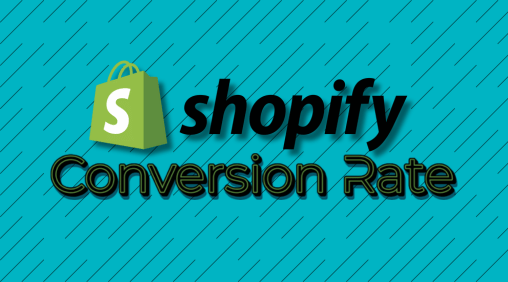Do you want to get more buyers out of your existing traffic? Then your Shopify conversion rate is your strongest lever. Instead of constantly pouring more budget into ads, targeted optimizations help you turn more visitors into customers — measurably and sustainably.
In this guide, you’ll learn how to analyze, prioritize, and optimize your Shopify conversion rate step by step — from quick wins to advanced measures around analytics and checkout optimization.
This guide is based on our experience as a Shopify partner at datora.de. We know which levers make the biggest difference in practice and implement these measures with clean, reliable technical execution. Whether you’re building your first store or already scaling: we support you from analysis to implementation so that every visitor has the potential to become a customer.
We focus on three things:
- User understanding
- Frictionless user experience
- Compelling offers
You’ll learn which conversion metrics really matter for Shopify, how to identify bottlenecks (e.g. product page, cart, or checkout), and which adjustments deliver the biggest gains. You’ll also get practical examples and checklists you can apply 1:1 in your store.
What does Shopify conversion rate mean in e-commerce?
Before we dive deep into conversion rate optimization, let’s clarify what it actually means.
Simply put, it shows how many of your store visitors actually become buyers. Imagine 1,000 people visit your store per month. If 30 of them make a purchase, your conversion rate is 3%. Sounds simple — and at the same time it’s one of the most important metrics for your success.
The formula: Conversion rate = (Number of orders ÷ Number of visitors) × 100
Depending on industry and product, average values vary. According to various benchmarks, the e-commerce conversion rate is often between 1% and 3%. In niches with strong trust and high repeat purchase rates, it can be significantly higher.
In Shopify, you can access your conversion metrics directly in the Shopify Analytics dashboard. You can go even deeper with external tools like Google Analytics or Hotjar, which provide additional data on user behavior. This helps you identify whether the issue originates in the Shopify checkout, the cart, or already on the product page.
Why is this so important? Because increasing your conversion rate by just 1% can often mean thousands of euros in additional revenue — without spending more money on Shopify marketing or ads. That’s where real growth potential lies.
By the way: if you’re still unsure which system suits you best, it’s worth taking a look at our shop system comparison. This allows you to compare the potential of different platforms.

The psychology behind the Shopify conversion rate
If you want to improve your conversion rate sustainably, it’s not enough to just tweak the technical setup. You need to understand how your customers make decisions. This is where psychology comes into play.
People don’t buy purely rationally — emotions play a major role. Trust, security, and a good feeling while shopping are decisive factors. That’s why trust elements like customer reviews, quality seals, or transparent return policies are so important for your conversion rate. They reduce uncertainty and increase willingness to buy.
Another factor is urgency. Countdown timers, limited offers, or messages like “Only 3 left in stock” can positively influence your sales rate. Important: stay authentic. Artificial scarcity without substance quickly feels untrustworthy and can have the opposite effect.
Social proof also plays a major role. When visitors see that other customers have had positive experiences, the likelihood that they will convert increases. You can implement this in your Shopify store with reviews, user-generated content, or live notifications.
And don’t forget user experience. A clearly structured design, understandable copy, and easy-to-find CTAs reduce friction. Even small obstacles — such as a confusing cart or too many form fields in the checkout — can massively weaken your store performance.
When you combine these psychological principles with clean technical implementation, you achieve a higher Shopify success rate and turn visitors into long-term loyal customers.
Tip: Many merchants also compare systems like Shopify Advanced vs Shopify Plus to determine which platform offers the best foundation for optimal conversion optimization.
5 common mistakes that slow down your Shopify conversion rate
Before actively increasing your conversion rate, you should know where the typical pitfalls lie. Many stores lose revenue because basic things aren’t set up properly — often without the operator even realizing it.
- Slow loading times:
If your store loads slowly, visitors bounce quickly. Especially on mobile devices, seconds matter. A slow theme or unoptimized images directly hurt performance and prevent better conversions. - Complicated checkout:
One of the most common conversion killers is the checkout process. Too many required fields, missing payment methods, or no guest checkout increase abandonment rates. With an optimized Shopify checkout, you can significantly boost sales. - Unclear product information:
Incomplete descriptions or poor images create mistrust. Users want to know exactly what they’re buying. If information is missing, conversions automatically drop. - Lack of trust:
Without reviews, trust badges, or clear return policies, many visitors hesitate to complete a purchase. Trust is one of the most critical factors for any online store. - No mobile optimization:
More than half of all Shopify purchases happen on mobile. If your store isn’t responsive or buttons are too small, your Shopify user experience suffers — and so do your conversions.
These mistakes are easy to avoid, and this is exactly where the first quick wins lie when you want to improve your conversion rate.
If you’re wondering what growth opportunities Shopify offers: a look at the benefits of Shopify Plus shows how usability, conversion potential, and scalability can be specifically improved.

10 measures to optimize your Shopify conversion rate
To systematically increase your conversion rate, you need a clear plan. The following measures have proven themselves in practice as real boosters.
- Checkout optimization: Make it as easy as possible for customers. Remove unnecessary fields, offer guest checkout, and rely on trusted payment providers (e.g. PayPal, Klarna, Giropay & Sofortüberweisung). Even small checkout tweaks can noticeably increase conversions.
- Content optimization: Use high-quality images, precise descriptions, and ideally videos. Storytelling around your product builds trust and increases purchase motivation.
- Improve usability: Your store must be intuitive to use. Navigation, filters, and search functions should be logically structured. The easier it is to find your way around, the higher the sales.
- Optimize layout: A clear structure with well-placed CTAs guides users through the purchase process. Also ensure mobile-optimized design.
- Calls to action & forms: Place eye-catching buttons in the right spots. Keep forms short, clear, and focused on essentials. Less friction means better conversions.
- Trust optimization: Add security and trust elements such as trust badges, reviews, and transparent shipping and return policies.
- Optimize the cart: Show clear shipping costs, offer multiple payment options, and highlight purchase benefits in the cart. This increases willingness to buy and reduces abandonment.
- Marketing fundamentals: Use targeted marketing such as personalized emails, retargeting campaigns, and content marketing.
- SEO: More visibility brings more qualified visitors. Focus on relevant keywords, clean code, and fast loading times.
- Customer retention: Don’t just sell once — stay in touch. Loyalty programs and email automations increase customer lifetime value and make customer relationships more profitable.
With these 10 measures, you have the most important levers to sustainably increase your Shopify conversion rate. From checkout and content to usability and customer retention, even small optimizations can have a big impact and turn more visitors into paying customers.
5 advanced strategies for a strong Shopify conversion rate
Once the basics are in place, you can further increase your conversion rate with advanced strategies. This is where smart technologies, automation, and clever marketing give you a competitive edge.
- Personalization & dynamic content: Visitors respond more strongly to content tailored to them. AI-powered product recommendations, dynamic banners, or personalized emails increase the likelihood that users turn into buyers. Shopify shines here thanks to flexible testing with apps.
- Automation & AI: From email flows and cart abandonment campaigns to chatbots, automation makes your store more efficient while boosting performance. This allows you to scale without hurting conversions.
- Multichannel strategies: Your customers aren’t only on your website. Social commerce via Instagram, TikTok, or Pinterest opens new opportunities. Combining these channels with Shopify builds sustainable growth and improves your rate.
- Optimize conversion tracking: You can only optimize what you measure. With properly set up Shopify Google Ads conversion tracking, you know exactly which campaigns generate sales and where you can save budget.
- Internationalization & localization: If you sell internationally, offer local languages, currencies, and payment methods. This can dramatically increase conversion rates, as customers feel they are buying locally.
A strong conversion rate doesn’t come from solid basics alone, but from the use of smart, advanced strategies. With personalization, automation, multichannel presence, clean tracking, and targeted internationalization, you stand out from the competition and make your business scalable.
Those who consistently use these levers not only increase sales, but also build long-term trust and customer loyalty.

Design & user experience: how to influence your conversion rate
Your store’s design doesn’t just determine first impressions — it also decides whether visitors actually become customers. Even small details can influence purchase decisions.
While clear structure, thoughtful color choices, and mobile optimization can significantly boost your conversion rate, cluttered menus or weak CTAs can do the opposite.
The following comparison shows the most common UX mistakes:
|
Area |
❌ Bad UX (Killer) |
✅ Good UX (Booster) |
|
Colors & CTAs |
Unobtrusive buttons, color chaos, no clear call to action |
Clear color psychology, CTAs stand out, consistent design |
|
Structure & Navigation |
Overly cluttered menus, unclear categories, weak search function |
Intuitive navigation, logical categories, fast search |
|
Storytelling |
Sober product presentation without emotion |
Images, texts & layout tell a story, brand identity |
|
Mobile First |
Shop appears confusing on smartphone, slow loading times |
Fully responsive, mobile checkout optimized, fast performance |
|
Micro-interactions |
No feedback, checkout seems static and insecure |
Hover effects, progress indicators, clear user feedback |
Good design is more than aesthetics — it’s a true conversion driver. By avoiding UX killers and focusing on clear calls to action, intuitive navigation, storytelling, mobile optimization, and smart micro-interactions, you create a shopping experience that builds trust and makes purchasing easier.
Tools, Apps & Technology
Your conversion rate doesn’t depend only on design and content, but also on the right tools and a solid technical foundation. Shopify offers a vast ecosystem of apps and integrations that help you improve your metrics.
- Optimize loading speed:
A fast website not only improves performance, but also increases your conversion rate. Use image compression, remove unnecessary apps, and choose a lightweight theme. Tools like Google PageSpeed Insights or GTmetrix reveal optimization potential. - Heatmaps & user tracking:
With tools like Hotjar or Lucky Orange, you can see how visitors move through your store. This allows you to identify where they drop off and optimize your conversion rate in a targeted way. - A/B testing:
Test different versions of your product pages, CTAs, or checkout flows. Even small changes can increase sales by several percent. Apps like Optimizely or Google Optimize are well suited for this. - Apps:
- Judge.me for reviews
- Privy for popups and email capturing
- PageFly for custom landing pages
- Vitals as an all-in-one app for Shopify optimization
- Shopify Analytics & external tools:
The standard reports in Shopify Analytics already provide many valuable insights. Combined with Google Analytics 4, you can control and analyze your data even more precisely.
With these tools, you create a solid foundation to continuously improve your store performance.
Tip: Especially if you operate in the enterprise segment, it’s worth looking at BigCommerce vs Shopify. Both systems focus heavily on scalability. Shopify also stands out with its massive app ecosystem, which offers maximum flexibility for optimization.
Monitoring & KPIs: How to measure your data correctly
You can only improve your conversion rate if you measure it consistently. That’s why clear key performance indicators (KPIs) are essential. In addition to conversion rate itself, you should build a set of metrics that give you a holistic view of your store’s performance.
- Shopify Analytics: Directly within Shopify Analytics, you’ll find important standard metrics such as cart abandonment, sales per visitor, and average order value. These data points help you identify bottlenecks in the purchase process and make targeted optimizations.
- Google Analytics 4: For deeper insights, combining Shopify with GA4 is highly recommended. This allows you to track which channels deliver the best conversion rates and where visitors drop off. Together with Shopify Google Ads conversion tracking, you can precisely control your marketing spend.
- Additional KPIs beyond conversion rate:
- Average Order Value (AOV): shows the average cart value
- Customer Lifetime Value (CLV): the total revenue a customer generates over the entire relationship
- Customer Acquisition Cost (CAC): how much you invest to acquire a new customer
- Performance monitoring:
Build a dashboard with your most important metrics so you can see at any time whether your measures are working. Important: test regularly (A/B tests), otherwise you’ll lose track of what actually works.
If you’re planning long term, taking a look at a Shopify Plus case study can be worthwhile. Larger shops in particular benefit from advanced reporting and monitoring options that help increase conversion rates even more precisely.

Case studies: How well-known stores increase their conversion rate
Theory is good — real results are better. That’s why you can see here how we at datora.de have worked strategically with our clients to measurably increase their conversion rates.
- More Nutrition: More Nutrition is a German supplement company and a brand of Quality First GmbH, based in Elmshorn. The brand’s goal is to enable restriction-free diets through innovative products. For More Nutrition, we optimize the entire shopping experience, develop custom features, and manage the migration of all processes to Shopify 2.0. In addition, we handle the management and coordination of product launches and promotions. These measures have sustainably increased both the conversion rate and operational efficiency.
- ESN (Elite Sports Nutrition): ESN is a German sports nutrition company and a brand of Fitmart GmbH & Co. KG, also based in Elmshorn. Elite Sports Nutrition (ESN) focuses on the development and sale of nutritional supplements for strength and performance athletes. We optimize the entire shopping experience for ESN, develop additional features, and support the company in close collaboration with its internal IT team during the migration of all processes to Shopify 2.0. This resulted in a measurable improvement in conversion rate and a smoother customer journey.
These case studies clearly show that a complete relaunch is not always necessary to significantly improve conversion rates. Often, targeted optimizations in the right areas are enough — whether through better user guidance, the introduction of new features, or technical adjustments such as upgrading to Shopify 2.0.
What matters is that every measure is tested and evaluated using clear KPIs. This way, you can not only increase your conversion rate step by step, but also build a more stable and successful e-commerce business in the long term.
Conclusion: More e-commerce sales through smart optimization
The Shopify conversion rate is one of the most important levers for your success in e-commerce. Instead of investing exclusively in new traffic, targeted store optimizations allow you to make better use of your existing visitor flow and generate more sales.
From psychological factors such as trust and urgency to technical optimizations in loading speed and checkout, there are many levers that directly influence your conversion rate.
In addition, strategic measures such as personalization or multichannel marketing help unlock further potential. This way, you can improve your rate step by step and build a solid foundation for long-term growth.
The examples of More Nutrition and ESN clearly show that a complete relaunch isn’t always necessary. Often, small but targeted optimizations lead to noticeable improvements in conversion rate. What matters is keeping an eye on your KPIs, testing regularly, and prioritizing your measures based on data.
When you combine strong fundamentals with advanced strategies, you create the basis for sustainable growth, stronger customer loyalty, and more stable revenue development. Ultimately, it’s about designing a shopping experience that not only convinces visitors to buy, but also makes them happy to return.
And that’s exactly where we support you. As a Shopify partner, we help you measurably increase your conversion rate — from analysis and optimization to technical implementation.








